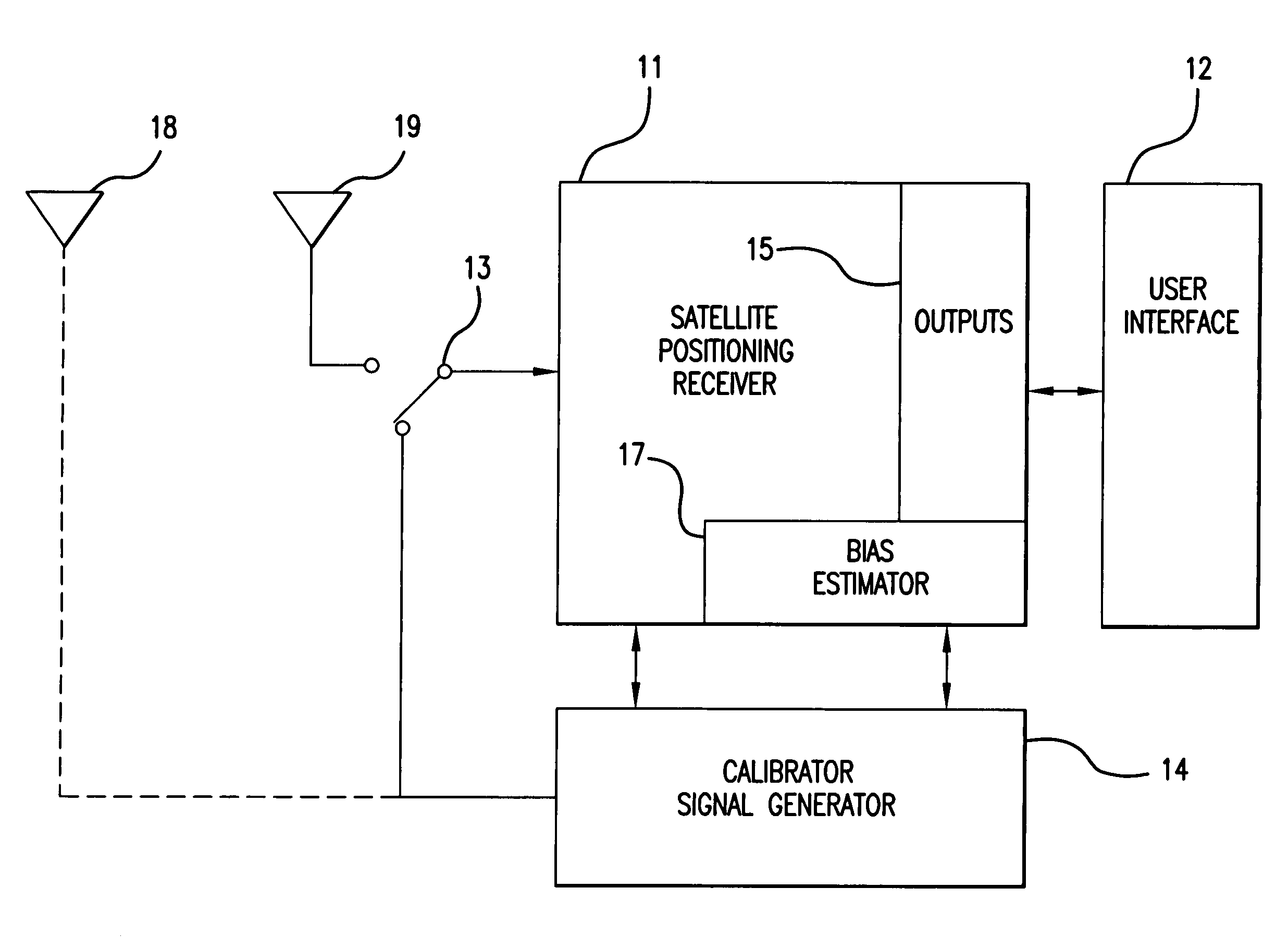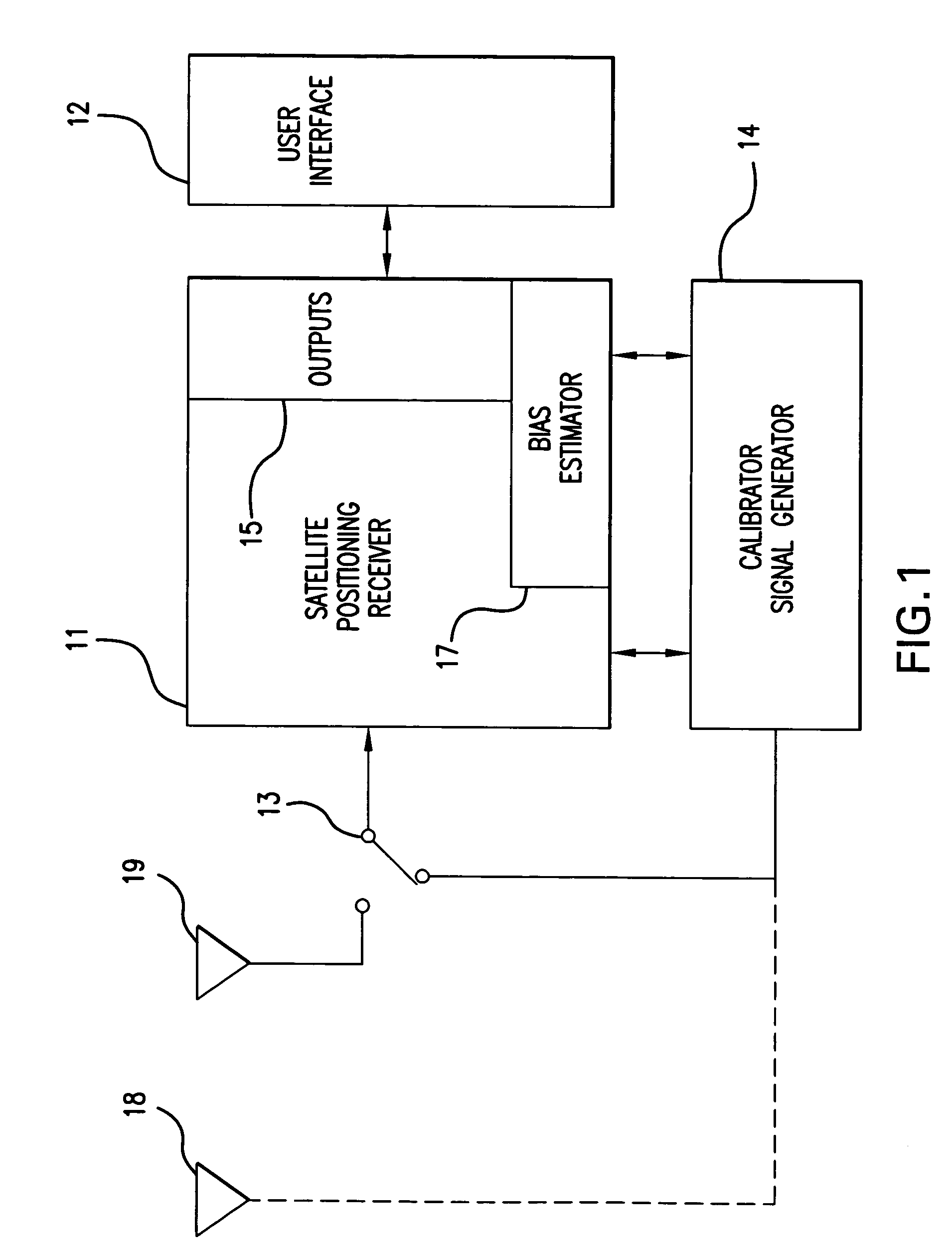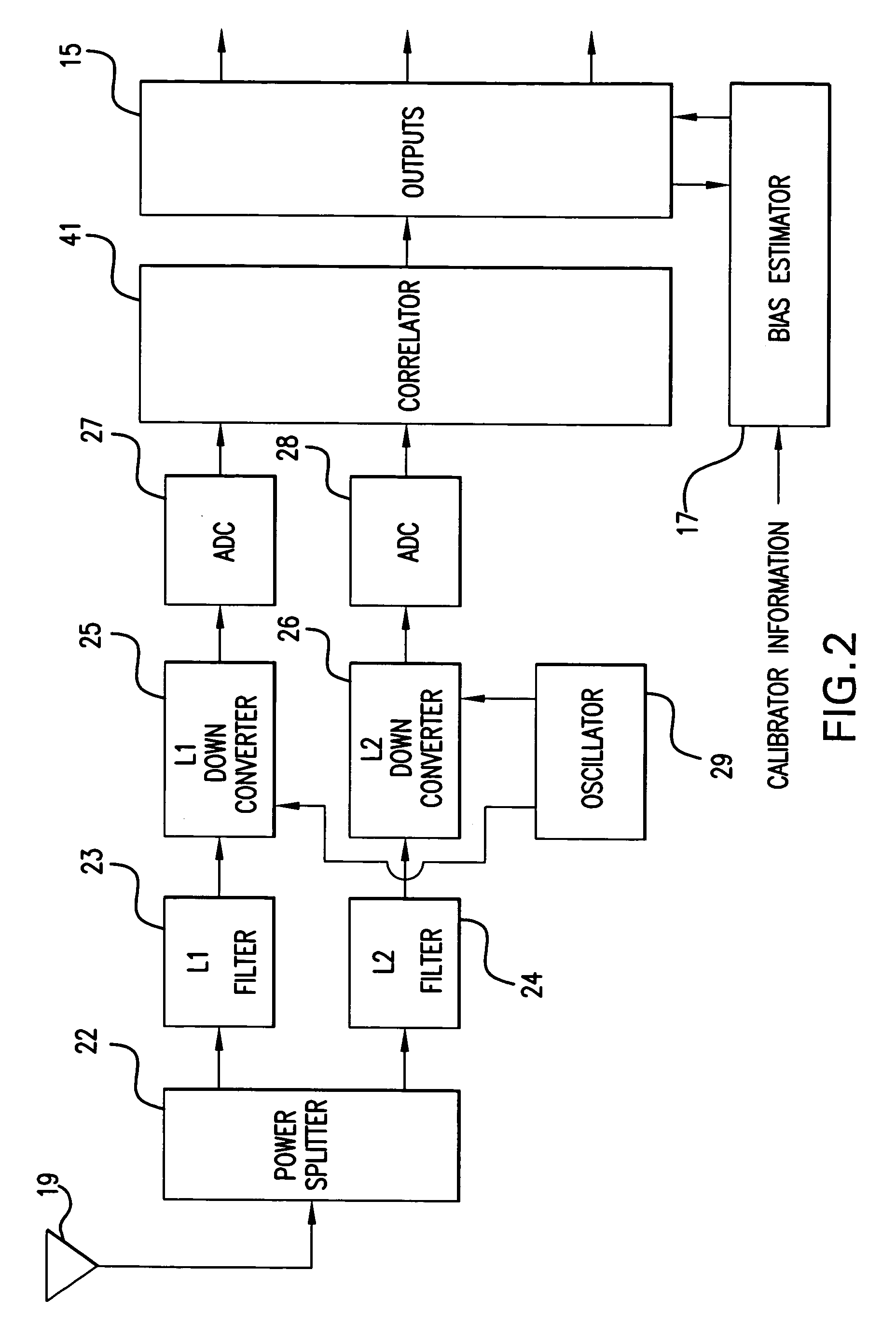GPS receiver with calibrator
a technology of calibrator and satellite navigation, which is applied in the direction of instruments, measurement devices, beacon systems, etc., can solve the problems of position errors of the order of several tens of meters, affecting the overall accuracy of satellite positioning systems, etc., and achieve the effect of improving the accuracy of satellite navigation systems
- Summary
- Abstract
- Description
- Claims
- Application Information
AI Technical Summary
Benefits of technology
Problems solved by technology
Method used
Image
Examples
Embodiment Construction
[0026]Reference now is made in detail to the present preferred embodiments of the invention, examples of which are illustrated in the accompanying drawings, wherein like reference numerals indicate like elements throughout the several views.
[0027]In the exemplary arrangement shown in FIG. 1, an improvement for calibrating a receiver 11 for a satellite positioning system, is shown. The satellite positioning system may be, for example, the global positioning system (GPS), the Russian global orbiting navigational satellite system (GLONASS) and / or future satellite positioning systems, such as the Galileo system and / or any other GNSS system.
[0028]The present invention incorporates replicas of synthetically generated calibration signals, at multiple frequencies, which are introduced at the input of the receiver 11. The corresponding relative delays measured by the receiver are thus determined as the receiver bias. For ionospheric estimation, for example, the calibration signal can have no...
PUM
 Login to View More
Login to View More Abstract
Description
Claims
Application Information
 Login to View More
Login to View More - R&D
- Intellectual Property
- Life Sciences
- Materials
- Tech Scout
- Unparalleled Data Quality
- Higher Quality Content
- 60% Fewer Hallucinations
Browse by: Latest US Patents, China's latest patents, Technical Efficacy Thesaurus, Application Domain, Technology Topic, Popular Technical Reports.
© 2025 PatSnap. All rights reserved.Legal|Privacy policy|Modern Slavery Act Transparency Statement|Sitemap|About US| Contact US: help@patsnap.com



